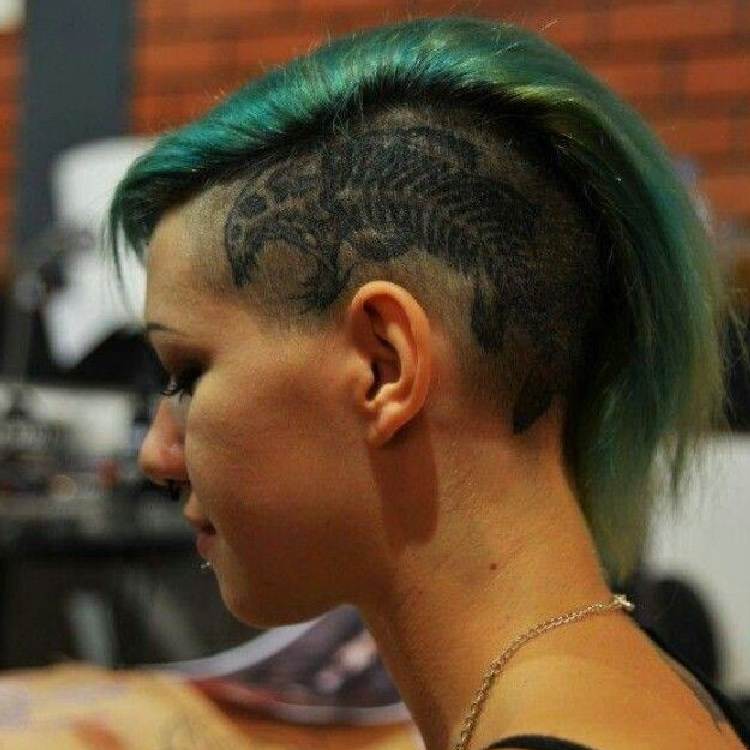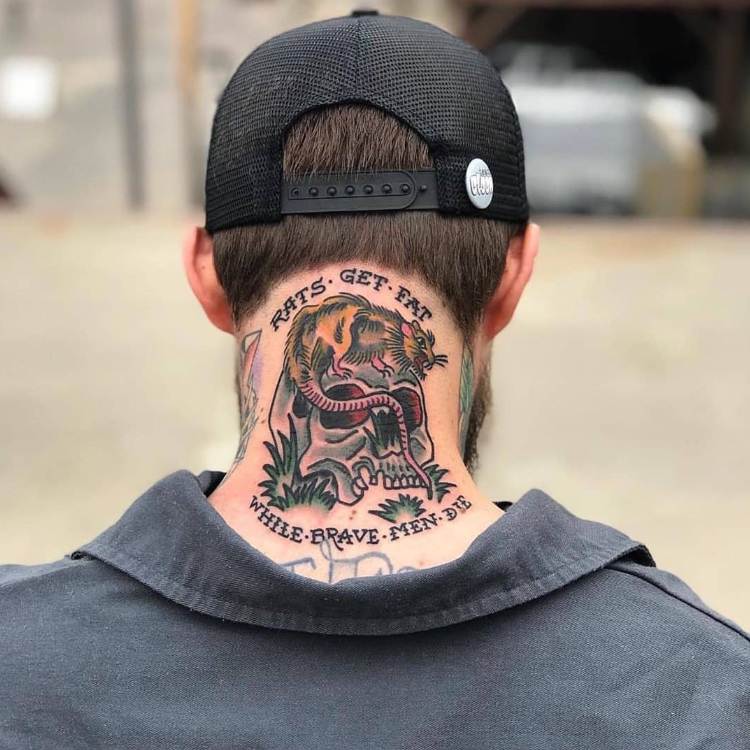Hair removal is an integral part of a person’s hygiene and some people, especially men like to keep it as it is. However, people are concerned about the effects of getting a tattoo on the hair growth.
Tattoos are made on the dermis layer of your skin and the hair follicles are deeper than that. However, it is commonly believed that tattoos damage your hair follicles leading to no hair growth over a tattoo.
So, do you wish to get in the tattoo groove but wonder does hair grows over tattoos? However, let us further know about the details of hair growth over the tattoos in this article.
Table of Contents:
- Part 1: Does Hair Grow Over Tattoos?
- Part 2: How Long Does Hair Grow Over Tattoos?
- Part 3: How to Manage Hair on Tattoos?
- Part 4: When Can I Shave Over my Tattoo?
Part 1: Does Hair Grow Over Tattoos?
Of course, hair can grow over tattoos normally. You can understand this situation by finding out the level of skin at which tattoos lie and the part where the hair follicle is placed.
The truth is the tattoo ink goes into the epidermis layer of the skin which is above the hair follicles while the hair follicles lie in the deeper tissues near the subcutaneous part of the skin.
The tattoo expert only places the probe above the skin and its ink is injected into the epidermis without reaching the deeper part. Whether it is the ink from the tattoo or the heat from the device, it stays superficial.
Hence, they do not touch or damage the hair follicles and the normal hair cycle continues. It also does not have anything to do with your hair growth disruption and dysfunction.
Part 2: How Long Does Hair Grow Over Tattoos?
Your hair will grow back within its due course. It can range from two to three weeks depending on factors like your hair growth rate and hormones. Your previous hair length remains the same after getting a tattoo.
The area you choose to get a tattoo on needs to be shaved for a smoother outcome. It is also a misconception that pre-tattoo shaving results in thicker hair. Hair grows at its normal pace post-shaving; it does look thicker due to the blunt razor cuts though.
The hair looks normal after its due growth. People usually worry about ingrown hair after getting a tattoo. Ingrown hair is when hair grows inside the skin instead of outside. Shaving can cause ingrown hair which results in bumps and inflammation.
But if you shave using a foaming gel or foam and shave in the direction in which the hair is grown it reduces the chances of getting ingrown hair.
Part 3: How to Manage Hair on Tattoos?
Hair Regrowth on the Tattoo
This refers to a decrease in hair count within 3 weeks, sourced from third-party laboratory testing reports. Individual results may vary. Once you have got your tattoo, the hair will grow back a little later than your usual rate because the skin has gone through damage.
Once the healing starts, the hair also grows back. Hair only grows on tattoos where it used to grow previously. You can remove hair on your tattoos once the wound is properly healed.
Use healing creams suggested by your tattoo artist and keep them away from perfumes and hazards.
Hair Removal Methods for the Hair over the Tattoo
Once, the wound is healed you can remove the upcoming hair growth by some grooming methods like tweezing, shaving, electrolysis, waxing, and depilatory creams. These methods are safe for people who have tattoos.
Tweezing
If your tattoo is small and has very little hair then you can opt for tweezing. Tweezing is done using a clean tweezer for plucking hair. This is a slow process.
Shaving
Shaving is a fast method for hair removal but it gets your hair back typically in 3 to 4 days. It also removes the dead skin and exfoliates the skin.
Waxing
Waxing is a painful process of hair removal but also exfoliates your skin. There are soft, sugar, hot, hard, and cold waxes in the market.
Depilatory Creams
Depilatory creams are also a fast way to remove hair and cause no pain. You leave the hair on your skin and remove it nearly painlessly.
Electrolysis
Electrolysis is also one save for the tattoo hair removal method. This process involves small beams of electricity to stunt the hair growth and follicles.
Part 4: When Can I Shave Over My Tattoo?
Having a tattoo is great but you must be wondering when to shave hair from tattoos because using a razor over a new tattoo might not be a wise decision. So, wait for your tattooed skin to heal completely before touching a razor.
Also, you need to take care of your tattoo wound like any other wound meanwhile. The disappearance of the scab formed after the tattoo is a sign that your skin has healed.
Skin takes about 15 days to heal superficially and around a month to heal from the deeper areas as well. Therefore, it is better to wait for 4 to 6 weeks and give the sin enough time to heal before shaving the hair grown over the tattoo.
You can shave the hair on your tattoo once it’s done. Shaving not only removes hair but also exfoliates, which leads to brighter and better tattoos.
Use high-quality razors and lubricants to remove hair on your tattoo. You need to be keen on hygiene and cleaning the tattoo area.
Conclusion
Here you are with the complete guide for hair growth and tattoos. Tattoos have nothing to do with stunted or no hair growth and they do not touch your hair follicles. You can remove this hair using certain hair removal methods that suit your tattoos as mentioned.
The better you prepare your skin before your tattoo, the smoother the hair-growing process post the tattoo. Make sure you get plenty of rest and fluids to heal your tattoo wound. It is not just getting a tattoo; it is a lot more than that.
Getting a desired tattoo design is cool but making the decision without thinking is not the right thing to do. Think thoughtfully and choose your design. You can get your favorite design by doing your research. After all, tattoos are your personality display!

 By myulikeadmin
By myulikeadmin



